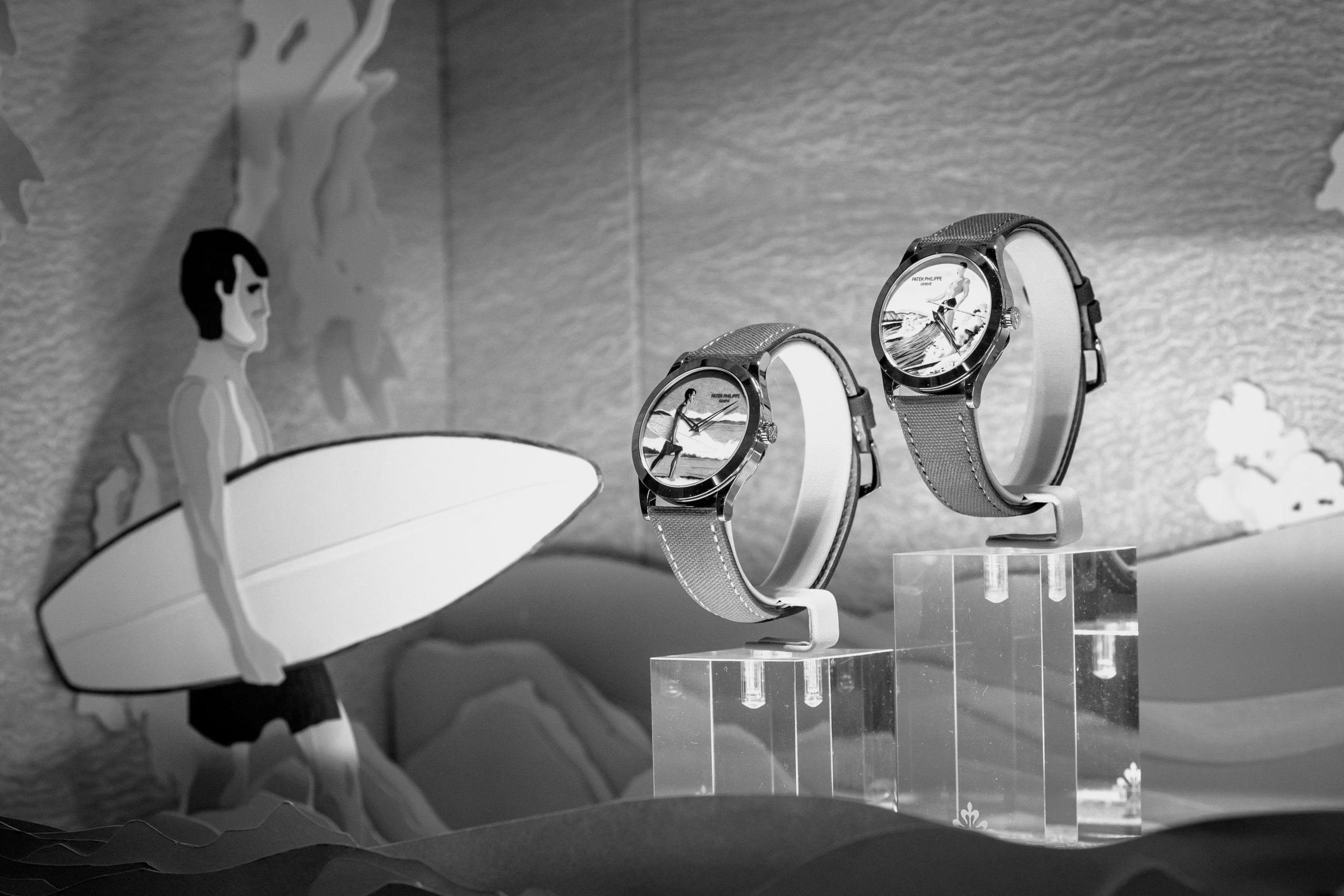
Heviloupe is one of my favorite accounts on Instagram. I especially enjoy the captions, full of solid watch knowledge and personal anecdotes from its author, Luigi. Over the years, the Zurich-based collector has become a close friend of Time Files. For the first time today, he is also a guest contributor, on perhaps his favorite topic: Patek Philippe. An aficionado and collector of the maison, he shares his experience visiting the exceptional exhibition that took place in Geneva earlier this month. Header image ©PATEK.
A few weeks ago, Patek Philippe presented its 2024 novelties, during Watches and Wonders. Yet, some of the most remarkable ones never saw the bright neon lights of Palexpo. Instead, they were showcased in a much more intimate setting: three rooms on the fourth floor of a building located at 41, rue du Rhône, in the city center of Geneva; a building Patek Philippe began to occupy in 1853.
While the fourth-floor rooms cannot compete on architecture with the belle époque Salon hosting the contemporary collection downstairs, their content – at least at this time of the year – surely has nothing to envy. From the 13th to the 27th of April, they hosted the “Rare Handcrafts 2024” Exhibition.
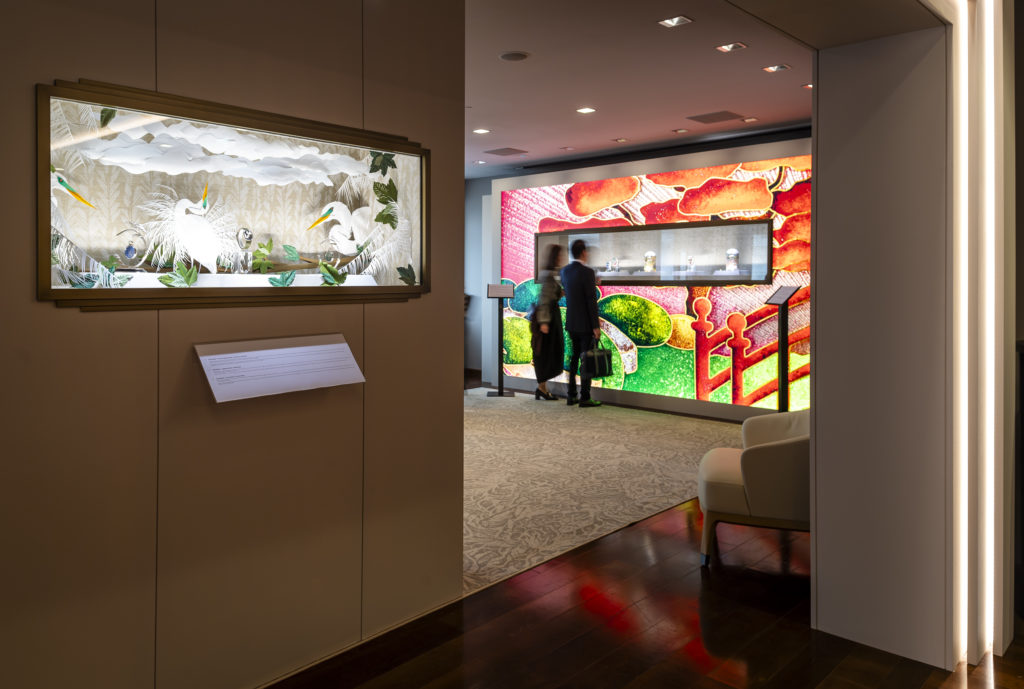
A unique exhibition for unique pieces
Every year, Patek Philippe introduces a number of wristwatches, pocket watches and desk clocks decorated using traditional techniques – all unique pieces or very limited editions. The techniques include engraving, enamelling, marquetry, guilloché and gem setting, or combinations thereof.
Since the very early days of its history, the Geneva maison has hired local craftsmen to decorate its timepieces, creating items of (in my view) unparalleled beauty. However, with timekeeping becoming more utilitarian in the first half of the 20th century, the market for such artistic watches started to decline. It then almost completely vanished in the 1970s and 1980s. In spite of this, Patek Philippe continued to commission work from talented artisans, preventing such crafts from dying out, preserving the savoir-faire. The contemporary Rare Handcrafts collections are, in essence, a continuation of this decades-long effort.
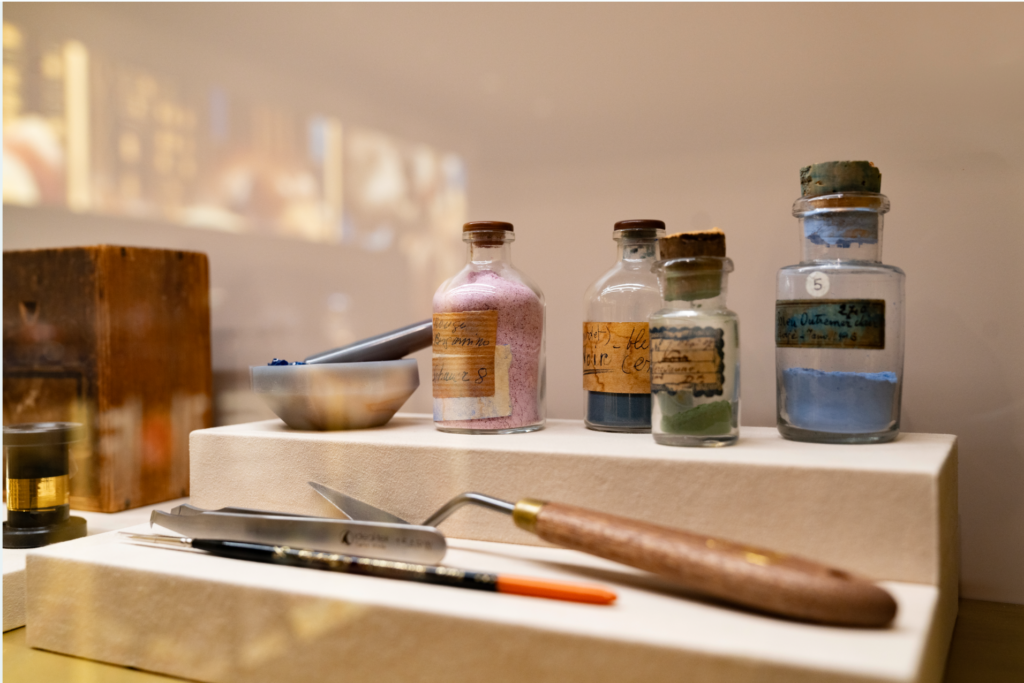
The annual Exhibition is a unique opportunity to see the incredible artifacts before they land in the hands of private collectors. An opportunity that, of course, I had no intention to miss!
To visit the Exhibition it was necessary to book a (free) ticket via Patek Philippe’s website, issued for a specific entry time. What I appreciated about the process was not only the absence of queuing at the entrance, but also that everyone could properly enjoy the Exhibition, at their own pace or by asking one of the (well-prepared) guides for a small tour. Most importantly, it allowed attendees to interact directly with the craftsmen (more on that further below).
Three thematic sections, from Zodiac to Sports
The Exhibition was divided into three thematic sections: one dedicated to the zodiac, another to nature and landscapes (hosted, rather fittingly, in a room overlooking Lake Geneva and its famous Jet d’eau) and finally one to culture, art and sports.

The first section is the one that, personally, interested me the least. While the grisaille enamel dials were absolutely fantastic from an artistic and craftsmanship perspective, constellations and zodiac signs are not a subject that resonates with me much. I must confess I glanced through the windows and rather quickly moved on to the second room.
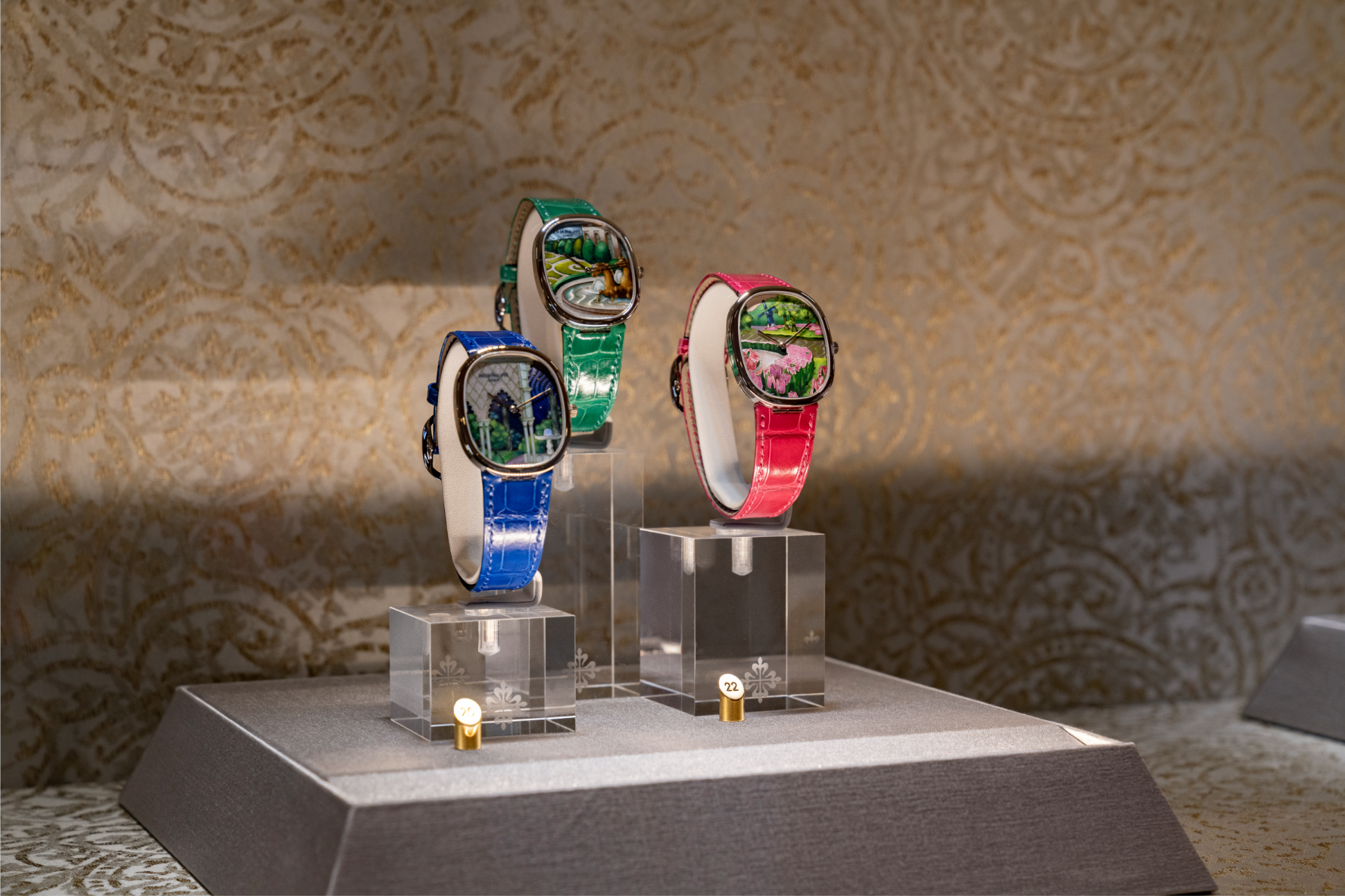
Disclaimer: I have a very soft spot for the Ellipse and the second room was full of them. It was an easy win! Whether for miniature paintings on enamel of “Geneva in Older Times” or representations of colourful gardens via a mix of guilloché and cloisonné enamel, who can argue with the fact that the Ellipse is just a perfect canvas?
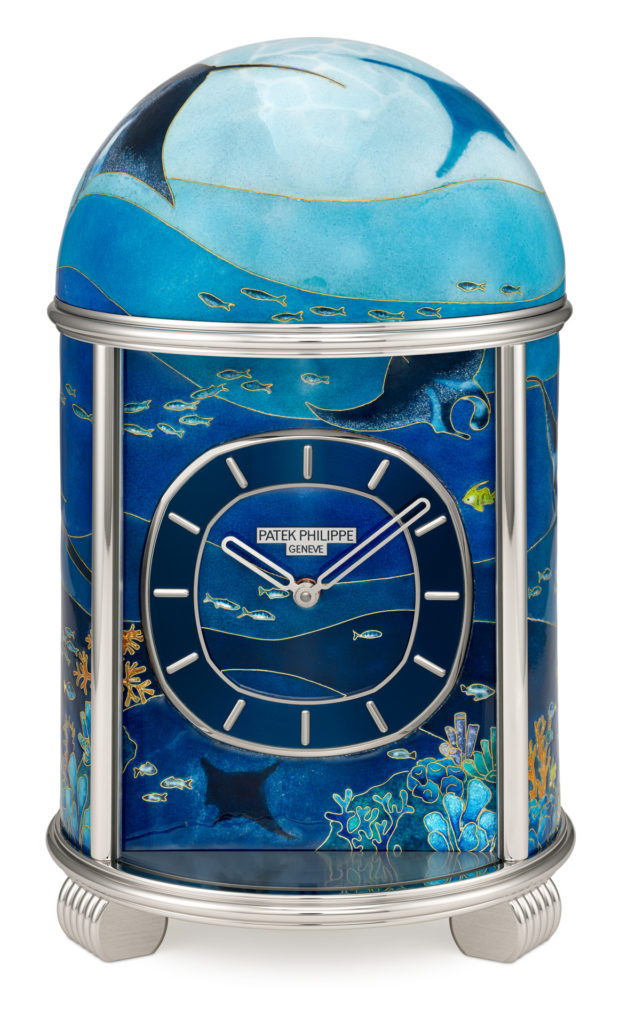
What I also really enjoyed about this section were the clocks. Two, in particular, caught my attention: the “Manta Ray” dome clock and the “Carp and Water Lilies” table clock. The former, with its shades of blue enamel and subtle references to the Nautilus, was a more intuitive pleasure for the eye. The second one mentioned I found much more complex. The intricacy and warmth of the scene along with the astonishing level of detail in the marquetry dial commanded a near religious level of attention and silence to be fully appreciated. It is hard to describe the somewhat odd sensation I felt staring at the clock, but I certainly would be up for it anytime.
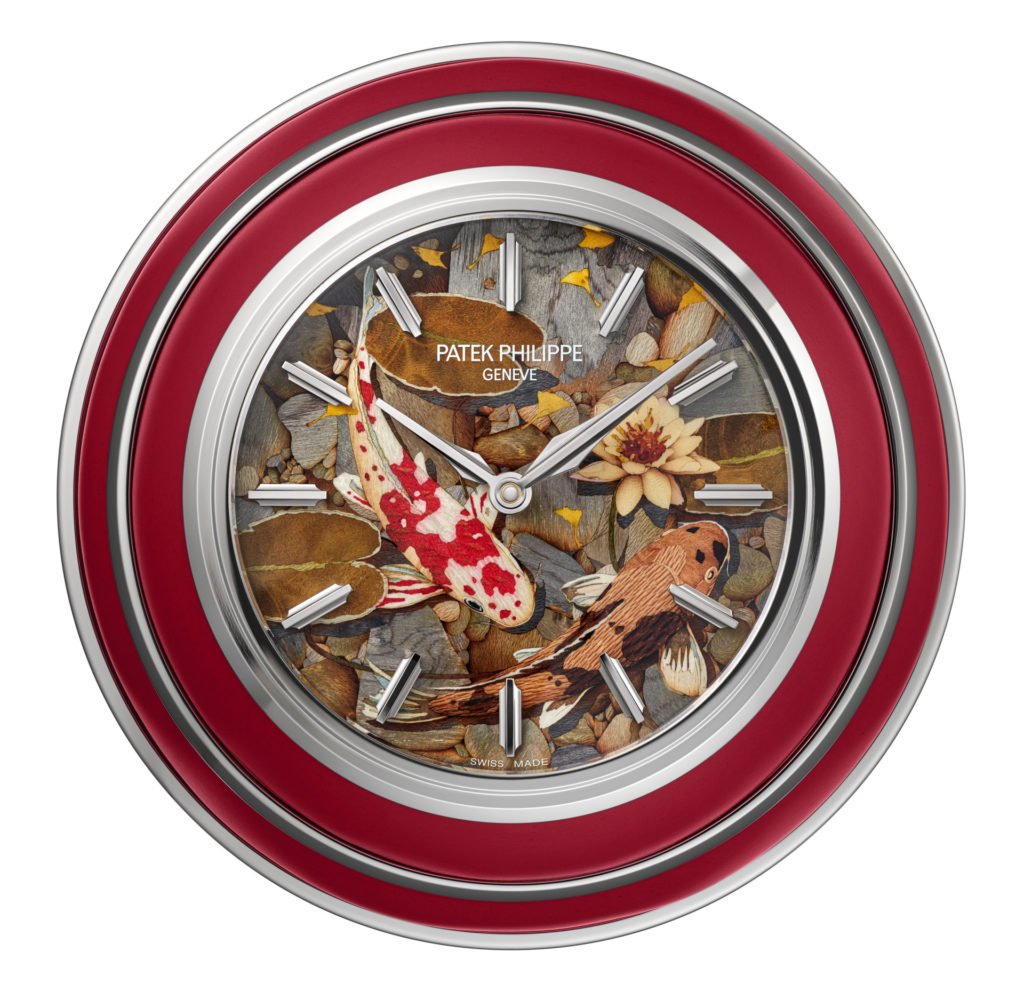
Marquetry was also the fil rouge connecting (to me at least) the second and third sections of the Exhibition. The first watch on display as I entered the final stage was “Morning on the Beach,” a Calatrava portraying a surfer on the shore, a board under his arm. The watch was shown in all marketing materials related to the Exhibition and posted everywhere on social media as soon as it became public. But from the pictures, I could not possibly imagine how impressive it would be in real life. The shine of the blue veneers composing the waves, the bright white of the sea foam, the shadows on the surfer’s body… Mind blowing.
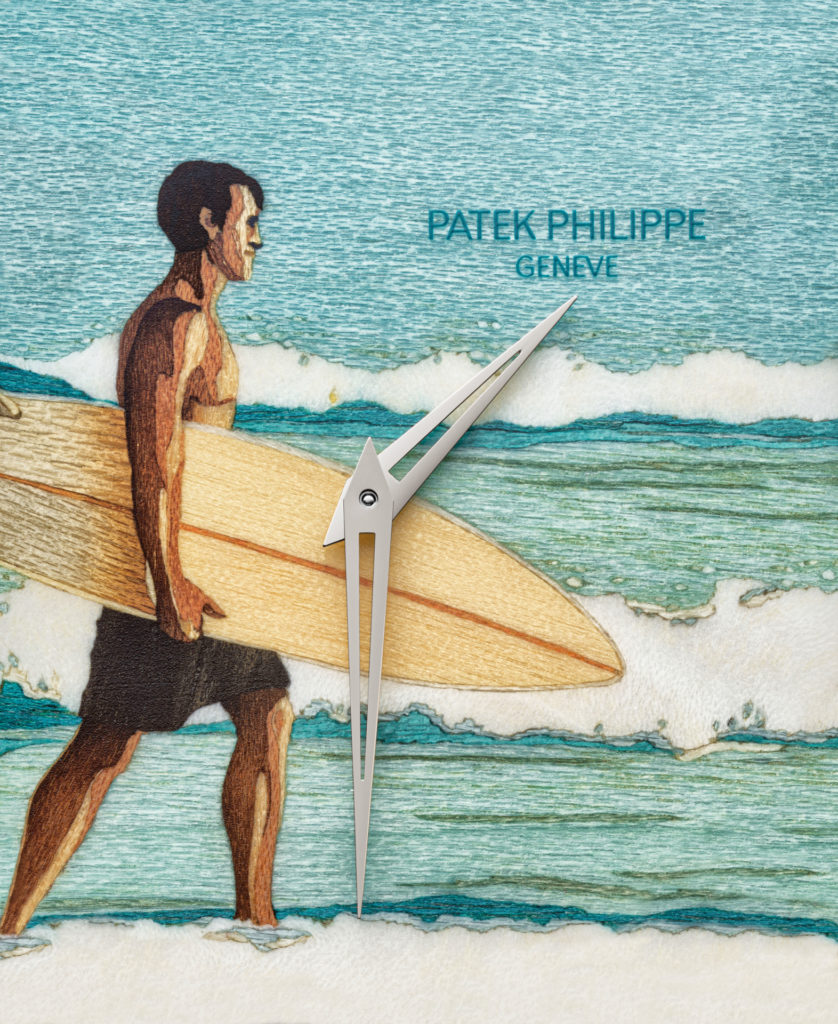
This third section definitely proved to be the most eclectic of the three. Dials spanned from the engraved representation of a kiwi (the bird, not the fruit; although a slice of kiwi – the fruit, not the bird – would be a fantastic subject for a Rare Handcrafts dial), to the enamel illustration of classic cars in the “American Beauty” series. Of course, some I liked more, some less, but – as we would say in Italy – ilmondo é bello perché é vario!
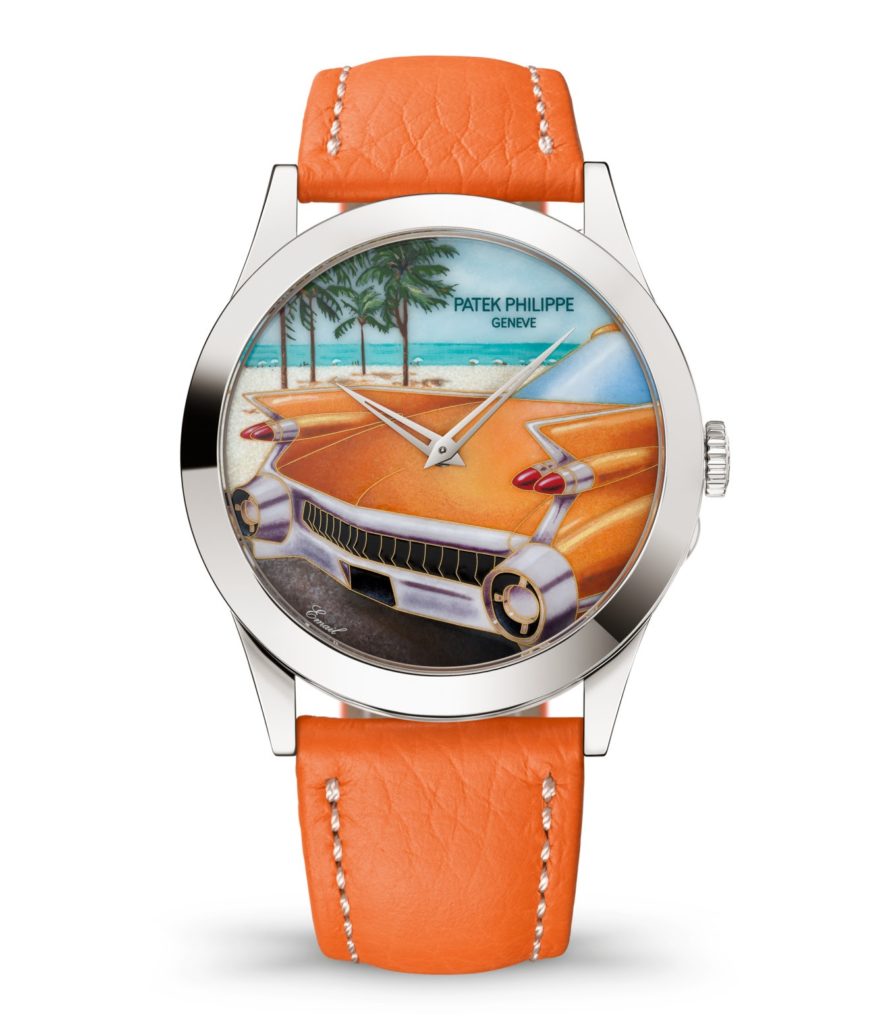
Encounters with the artisans
Perhaps the most exceptional feature of the Exhibition was that each room hosted a workbench with an artisan ready to illustrate their craft. Attendees could experience first-hand what it takes to achieve the level of precision (and beauty) found in the finished timepieces.
I simply loved being able to observe, through a magnifying glass, the micro movements of the engraver with her chisel. I also witnessed the care of the guillocheur in applying just the right amount of pressure for his rose engine to produce an even pattern, and tried to follow (and replicate) the hands-eyes-foot coordination of the marquetry artist cutting those tiny veneers.

Meeting the makers and having a privileged look at their technique and skills not only increased my awareness of how difficult it is to craft such wonderful objects, but also established a deeper, more personal connection with the watches and clocks displayed all around.
Concluding thoughts
Was the Exhibition worth six hours on the train from and back to Zurich? Absolutely. Artistic watches are a segment of Patek Philippe’s (history and) production that is too frequently overlooked. That may be because they are quite difficult to come across. Having the opportunity to see so many in real life, meet the people breathing life into them and experiencing the various techniques was very special. To anyone with an interest in watchmaking, art or craftsmanship, I can only highly recommend it. For those of you who were not able to make it in Geneva, the “Rare Handcrafts 2024” Exhibition will be in London from the 7th to the 16th of June, hosted in the newly renovated and recently reopened Salons on Bond Street.


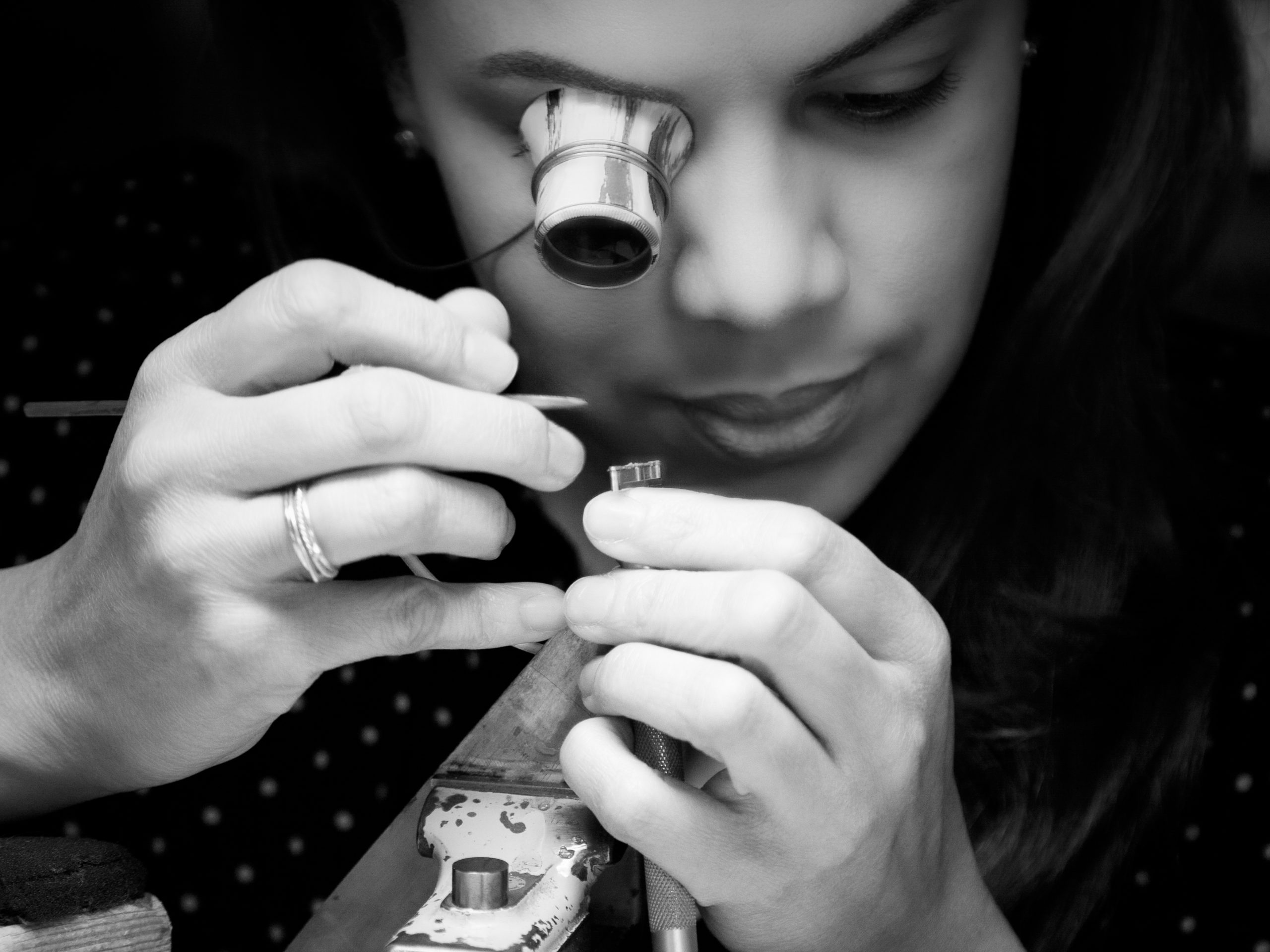

Bravo Luigi!